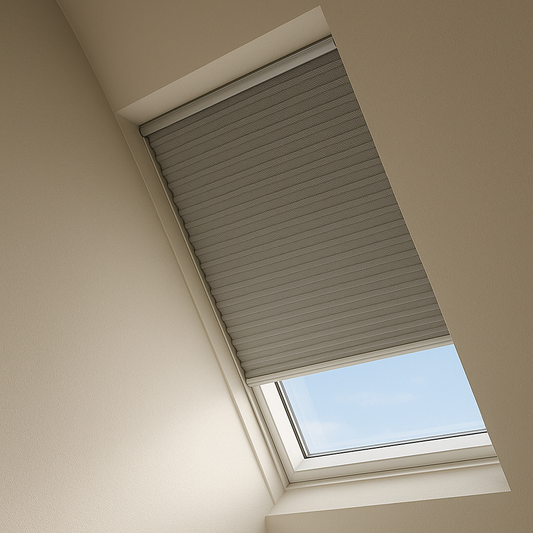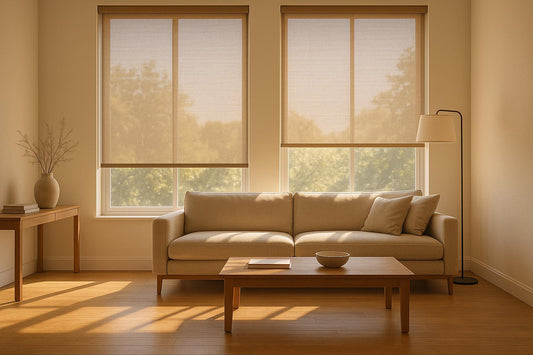
What's the Difference Between Blinds and Shades? Your Guide to Making the Right Choice
Wondering what’s the difference between blinds and shades? Simply put, blinds have adjustable slats for controlling light and privacy, while shades are a single piece of fabric that provides a softer, uniform look. In this article, we’ll explore these differences in detail to help you decide which is the best fit for your home.
Key Takeaways
-
Blinds provide adjustable light control with a structured appearance, while shades offer a softer aesthetic and design flexibility.
-
Types of blinds include Venetian, faux wood, and vertical, while shades range from roller to cellular and Roman, each serving different functional and aesthetic purposes.
-
When choosing window treatments, consider factors like energy efficiency, child safety, budget, and the installation process to avoid common mistakes.
Understanding Blinds and Shades
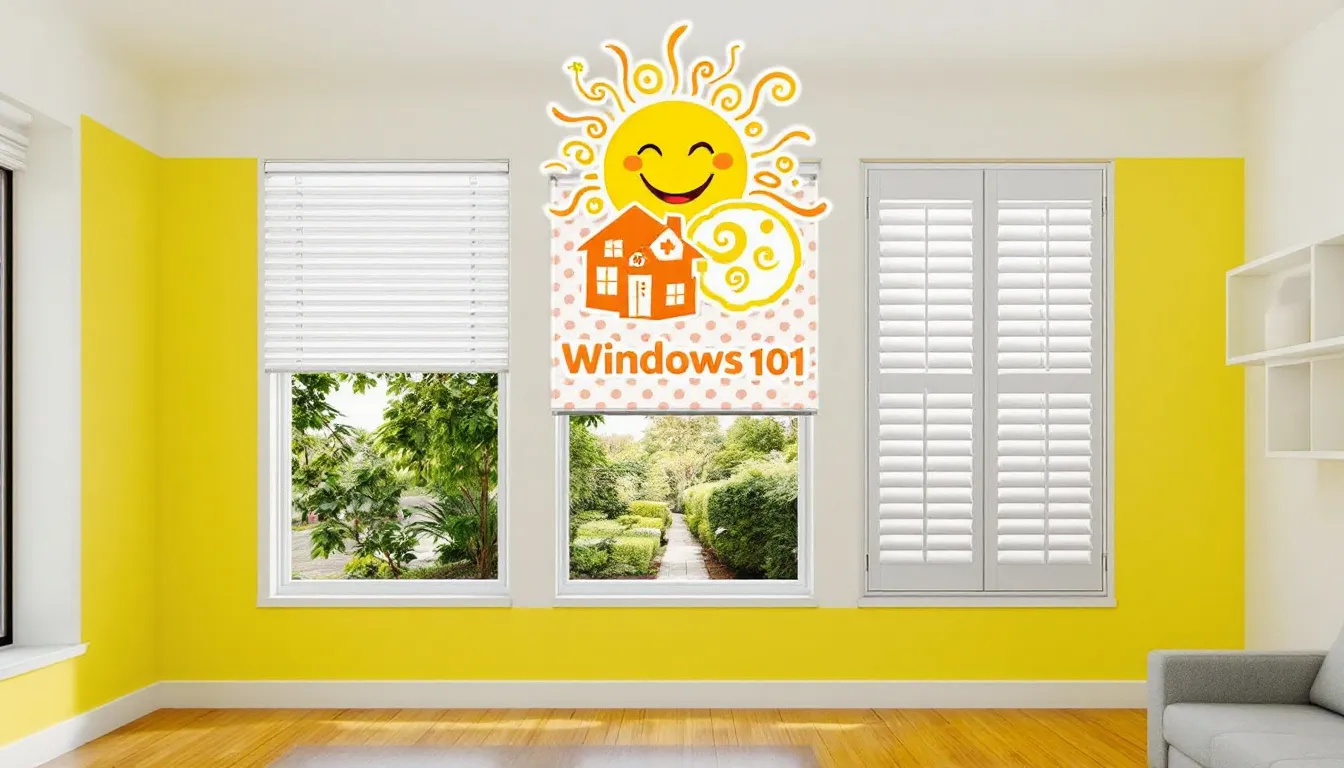
Blinds and shades might seem similar at first glance, but they offer distinct benefits and serve different purposes. Unlike blinds, shades are typically constructed from softer materials like fabric, giving them a more fluid appearance. Blinds are typically constructed from rigid materials like vinyl, metal, and wood, giving them a structured appearance. They consist of individual slats that can be adjusted to control light and privacy. This adjustability allows for precise light control, making blind a popular choice for those who want more flexibility.
Shades, on the other hand, are made from a single piece of material and can be rolled or pulled down. They offer a softer aesthetic and are available in a broader variety of designs and various materials, including fabrics, vinyl, and natural materials. While solar shades generally block light and provide privacy, their opacity can vary, offering different levels of light diffusion and shade.
Blinds offer structured, adjustable light control, whereas shades provide design flexibility and a softer look. Recognizing these differences in blinds vs shades is key to choosing the right window treatments.
Types of Window Blinds

Window blinds come in various types, each offering unique features and benefits. Venetian blinds, for example, feature horizontal slats and vertical slats that can be adjusted for light control and privacy. These blinds are versatile and suitable for a range of interior styles, making them a popular choice for many homeowners.
Faux wood blinds are designed to imitate the appearance of real wood while being more resistant to moisture. Constructed from eco-friendly premium ABS composite material, they offer durability and a high-end look without the maintenance issues associated with real wood. This makes them ideal for areas with high humidity, such as bathrooms and kitchens.
Vertical blinds are particularly suitable for large windows and sliding doors. Their design allows for easy opening and closing, and they come in a variety of materials and colors, providing a clean and minimalist style. Aluminum mini blinds, metal blinds, and window blind options also offer a sleek, modern look and are lightweight, making them easy to operate and maintain.
Types of Window Shades
Different types of window shades serve specific purposes and enhance functionality. Roller shades are known for their minimalist design, featuring a continuous fabric panel that rolls up into the headrail. They are easy to use and can be styled to blend seamlessly with your decor or serve as a striking focal point.
Cellular shades, also known for their energy efficiency, feature a unique honeycomb design that can trap air, providing excellent insulation. This makes them one of the most energy-efficient shades available, helping to regulate room temperature and reduce energy costs.
Roman shades add a touch of elegance to any room with their luxurious fabrics, which can include silks and linens. They can be customized in various textures and colors, offering a tailored look that enhances the overall decor. Whether you prefer a classic or contemporary style, Roman shades can be a versatile choice for your window treatments.
Light Control and Privacy
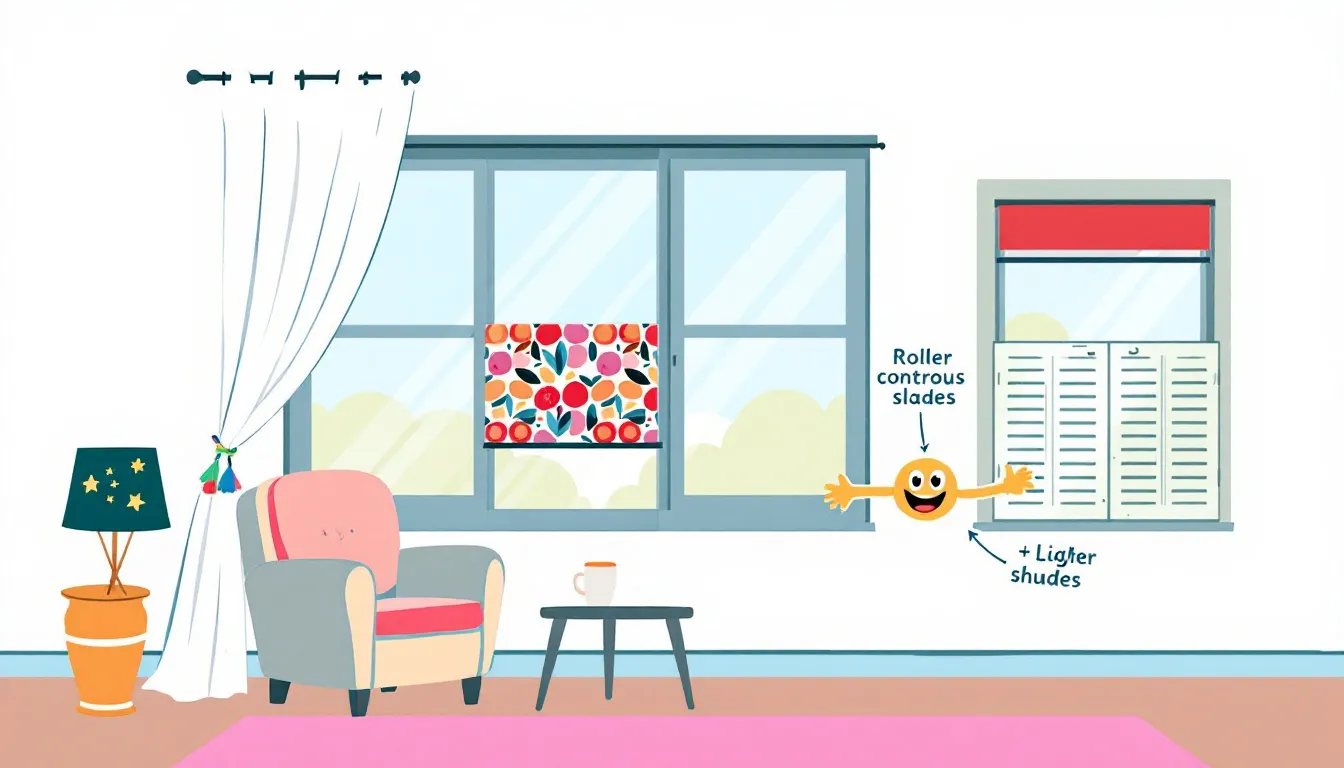
When it comes to light control and privacy, blinds and shades offer different advantages. Blinds allow for precise light control through adjustable slats. You can tilt the slats to let in natural light while maintaining control privacy, or close them completely to block light and ensure privacy.
Shades, on the other hand, provide a more light uniform experience based on their opacity options. They generally offer a softer aesthetic and can be customized for room-darkening features or light diffusion. Roman shades excel in both light control and privacy, while sheer shades provide a gentle diffusion of light while maintaining some visibility.
Overall, blinds are typically better for precise light control, while shades offer varied opacity and soft light management to enhance privacy. Depending on your specific needs, you can choose the option that best suits your lifestyle and decor.
Durability and Maintenance
The choice of materials in blinds and shades greatly influences their overall durability. Faux wood and aluminum blinds are particularly sturdy and resistant to damage, making them suitable for long-term use. Blinds made from durable materials often have a longer lifespan, which can lead to lower replacement rates over time.
Regular cleaning according to material type is necessary to maintain the quality of both blinds and shades. Blinds typically require more frequent cleaning due to their slatted design, which collects dust more easily.
In contrast, shades, especially those made of high-quality fabrics, may need more care to maintain their appearance over time. Regular maintenance for shades may include vacuuming or using a soft cloth for spot cleaning to deal with stains.
Aesthetics and Style Options
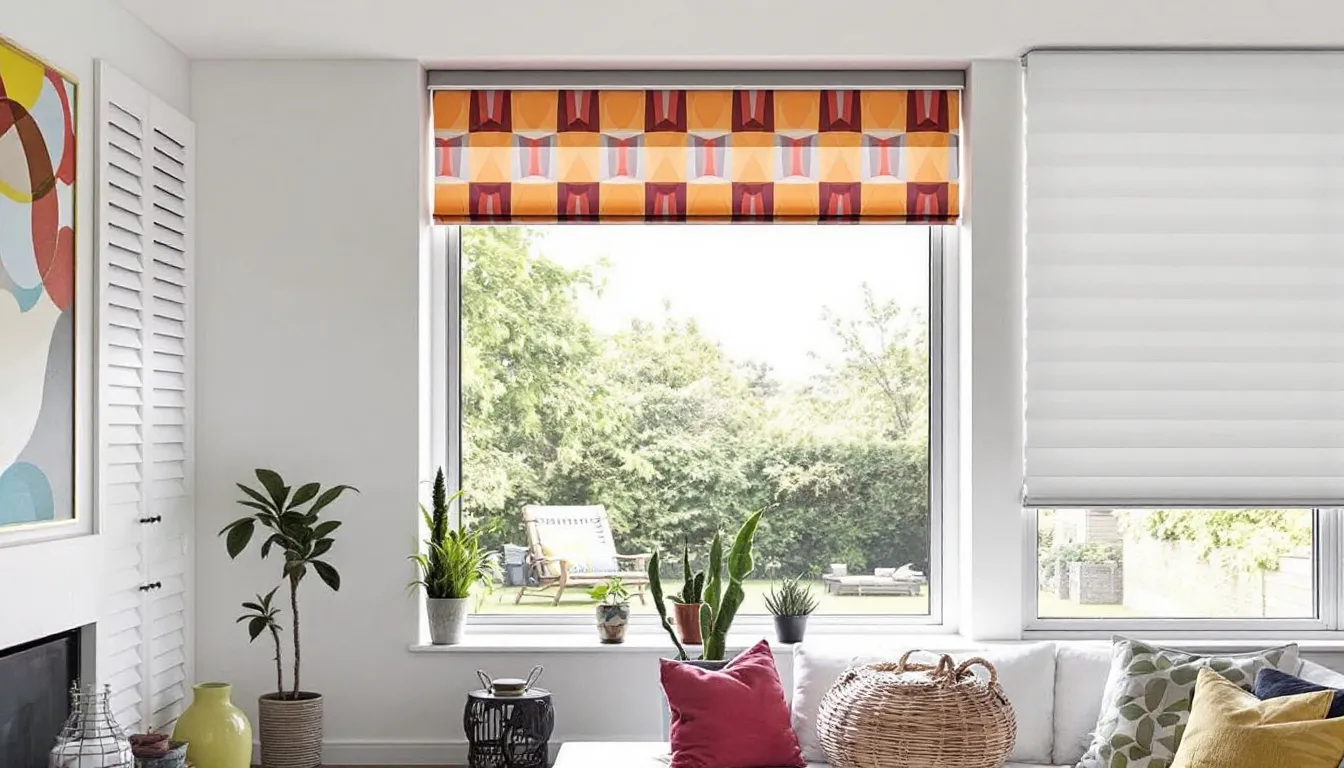
The aesthetic appeal and customization options of blinds and shades can significantly impact the look and feel of your home. Zebra blinds combine alternating sheer and opaque fabric bands, creating a striking visual element while allowing light control. Roller shades are known for their minimalist appearance and can be styled to blend seamlessly with your decor.
Roman shades provide a soft, elegant touch with fabric that folds neatly when raised, enhancing the overall decor. They can be customized with various luxurious fabrics and textures, including silks and linens, to match your interior design. Faux wood blinds replicate the appearance of natural wood but are more durable and moisture-resistant, suitable for various environments.
Customization options for shades are extensive, including upgraded fabrics, valances, fold styles, liners, and lift systems. Professionals can offer insights on the latest trends in window coverings to match your specific style. Whether you prefer a classic look or a modern design, different styles of blinds and shades offer versatile aesthetic choices to complement any room.
Energy Efficiency
Energy efficiency is a crucial factor to consider when choosing window treatments. Cellular shades feature a unique design that captures air, enhancing their energy efficiency. They offer excellent insulation and can reduce heat loss through windows by over 40% during heating seasons. This makes them one of the most energy-efficient shades available, potentially leading to cost savings on utility bills.
Blinds, while providing better light control, are generally less efficient at offering insulation compared to shades. However, insulated blinds and shades can significantly improve thermal performance, enhancing comfort and efficiency. Proper window coverings can manage heat gain and loss effectively, impacting energy costs and creating a more comfortable living environment, with light entering being a crucial factor.
Child Safety Considerations
Child safety is a paramount concern when selecting window treatments. Corded blinds can pose strangulation risks to children, highlighting the importance of safer alternatives. Recent safety standards dictate that cords on custom window coverings must be limited in length to enhance child safety.
Cordless and motorized options window treatments are recommended to minimize the risk of accidents involving children. Roller shades, in particular, are considered one of the safest options for homes with kids due to their lack of cords and minimal choking hazards.
Proper installation of window coverings is crucial to preventing accessible cords, ensuring a safe environment for your children.
Budget and Cost
Budget is often a significant factor when choosing between blinds and shades. Window blinds typically cost between $50 to $200 per window, while shades range from $30 to $150 depending on the material and size. Faux-wood blinds are the most affordable option for window treatment. They provide a high-end appearance at a lower cost.
Blinds are generally cheaper and easier to install compared to shades. However, shades tend to be more expensive due to the variety of materials and customization options available. While shades may have a higher upfront cost, their energy efficiency and aesthetic appeal can offer long-term value.
Installation Process
The installation process for blinds and shades can vary, but both are generally suitable for beginners. Blinds primarily use the same installation bracket, making the process straightforward. Shades, however, tend to vary more between styles, which can complicate the installation process.
Beginners can find assistance with installation through resources like Blinds.com, which offers instructions and video guides. It’s important to plan the installation method carefully to avoid gaps that compromise light control and privacy. Proper installation ensures that your window coverings function correctly and look their best.
Mistakes to Avoid When Choosing Blinds or Shades
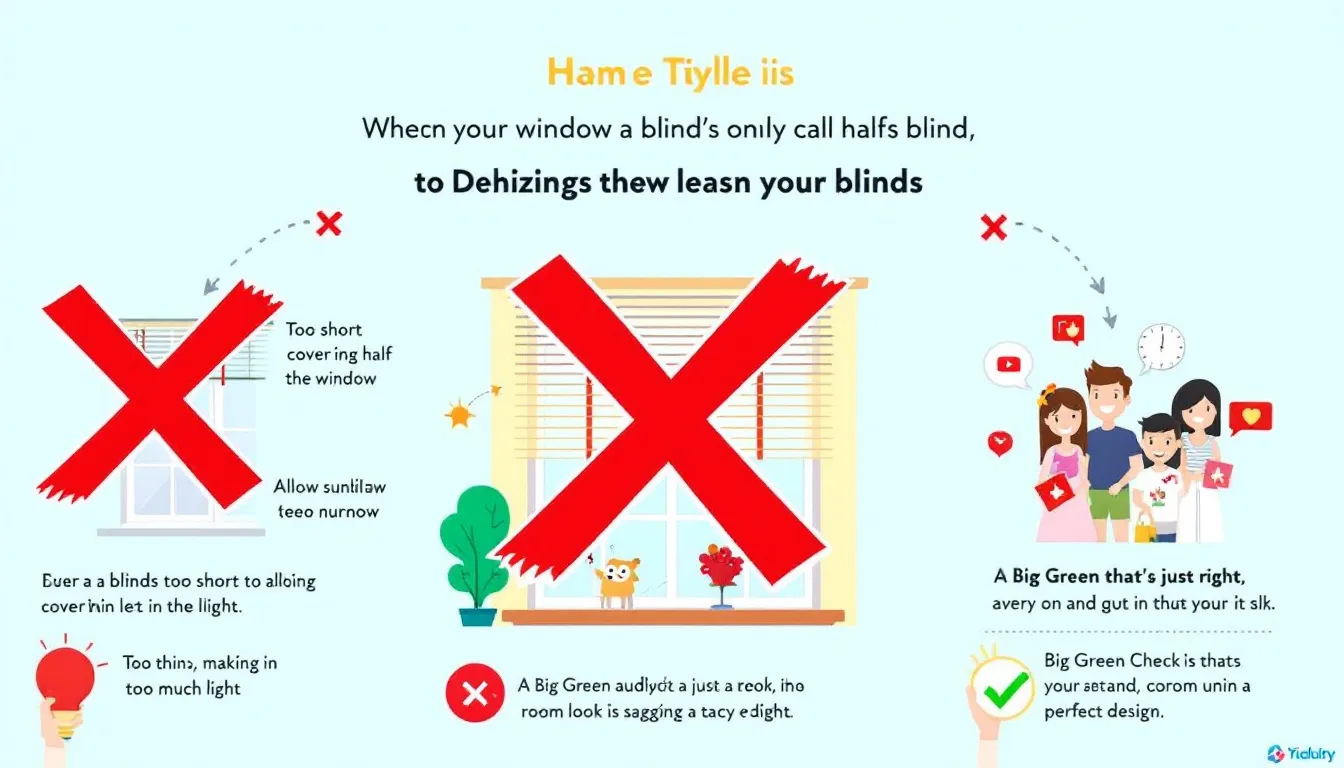
Avoiding common mistakes is crucial when choosing window treatments to avoid dissatisfaction. Understanding your specific needs, including purpose and style, is necessary before making a selection. Inaccurate measurements can lead to improper fitting of shades, which is a common mistake in the selection process.
Functionality should not be overlooked when buying shades; it impacts daily use and satisfaction. Choosing cheap over high quality materials can result in dissatisfaction and potential replacement costs in the future. When selecting materials, consider their longevity and suitability for your environment.
A designer can help navigate the many options for the best window treatments, ensuring your choices complement your space and meet your needs while avoiding mistakes with custom window treatments and soft window treatments.
Expert Assistance
If you are unsure about the style of blinds or shades for your home, contacting a designer for guidance can be invaluable. Design experts at Norman® can provide tailored recommendations for choosing window treatments. A local dealer can offer personalized solutions tailored to your specific needs.
Seeking expert advice ensures that you make informed decisions and select window treatments that enhance your home’s functionality and aesthetics.
Summary
In summary, understanding the difference between blinds and shades is crucial for making the right choice for your home. Blinds offer precise light control and durability, while shades provide design flexibility and energy efficiency. Each type of window treatment has unique benefits and considerations, from installation to child safety and budget.
By considering your specific needs and consulting experts, you can select window treatments that enhance your home’s comfort, style, and functionality. Whether you choose blinds or shades, the right window coverings can transform your living space and provide lasting satisfaction.
Frequently Asked Questions
What are the main differences between blinds and shades?
The main difference between blinds and shades lies in their design; blinds consist of adjustable slats for precise light control, whereas shades are made from a single piece of material that provides varying degrees of opacity, enhancing light diffusion.
Which type of window treatment is more energy-efficient?
Cellular shades are the most energy-efficient window treatments, providing exceptional insulation that minimizes heat loss. Consider them for improved energy savings in your home.
Are blinds or shades safer for homes with children?
Cordless and motorized shades are the safest choices for homes with children, as they significantly reduce the risk of strangulation associated with traditional blinds. Prioritizing safety in your home is essential for a peaceful environment.
How much do window blinds and shades typically cost?
Window blinds generally cost between $50 to $200 per window, whereas shades typically range from $30 to $150, depending on the material and size. It's important to consider these ranges when budgeting for your window treatments.
Can I install blinds and shades myself?
Yes, you can install blinds and shades yourself, as they are generally designed for DIY installation with available resources like instructions and video guides.

